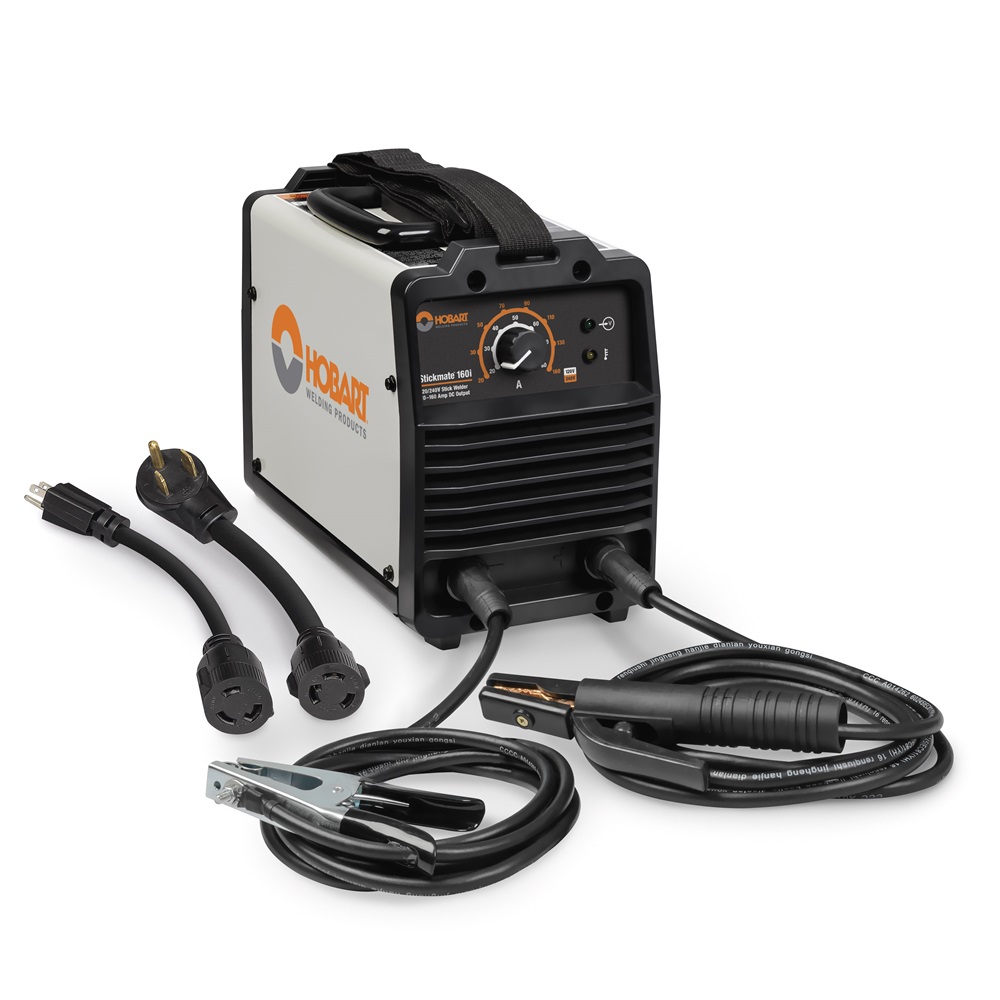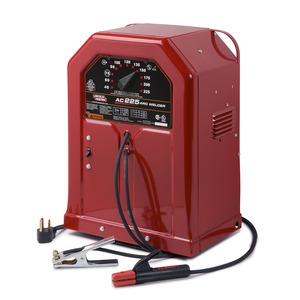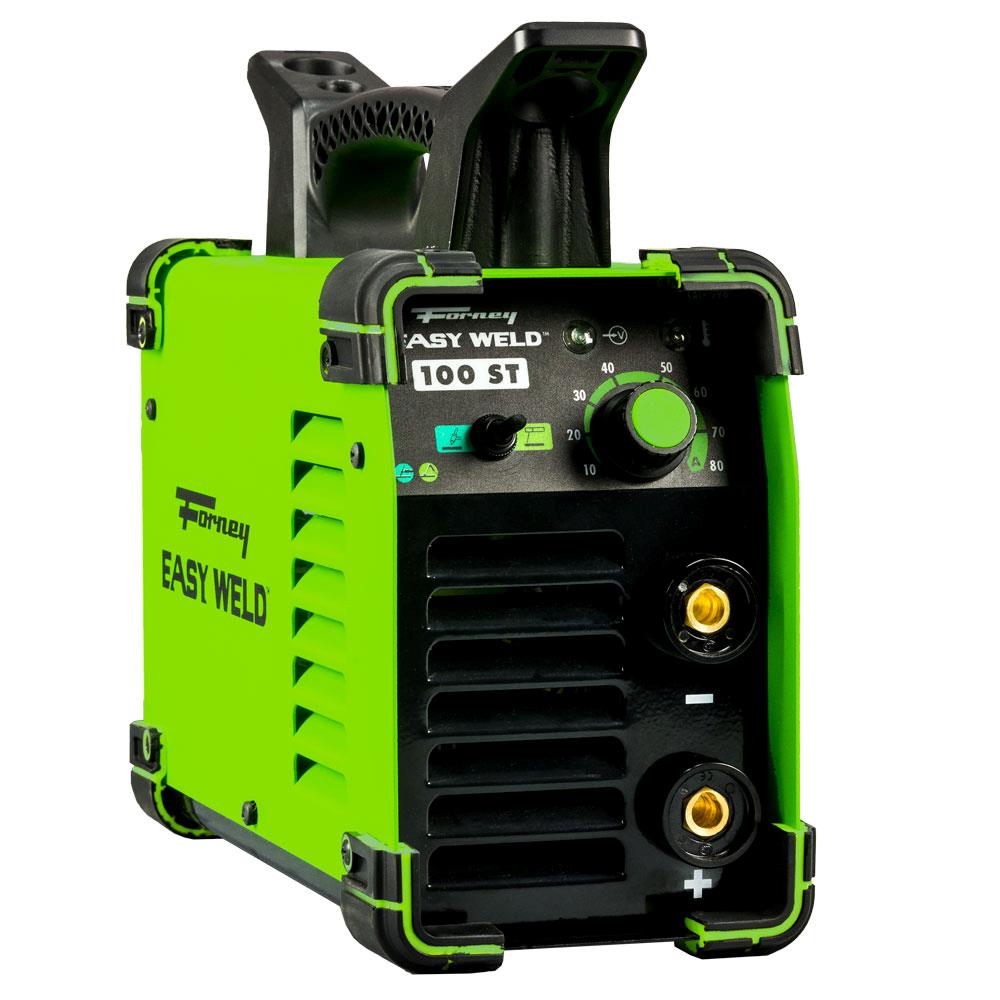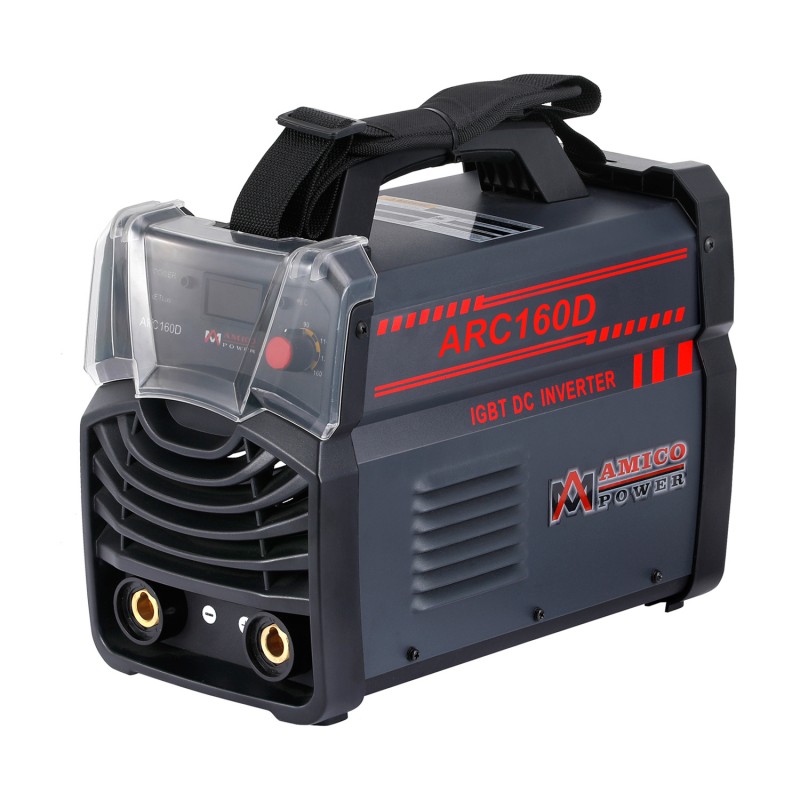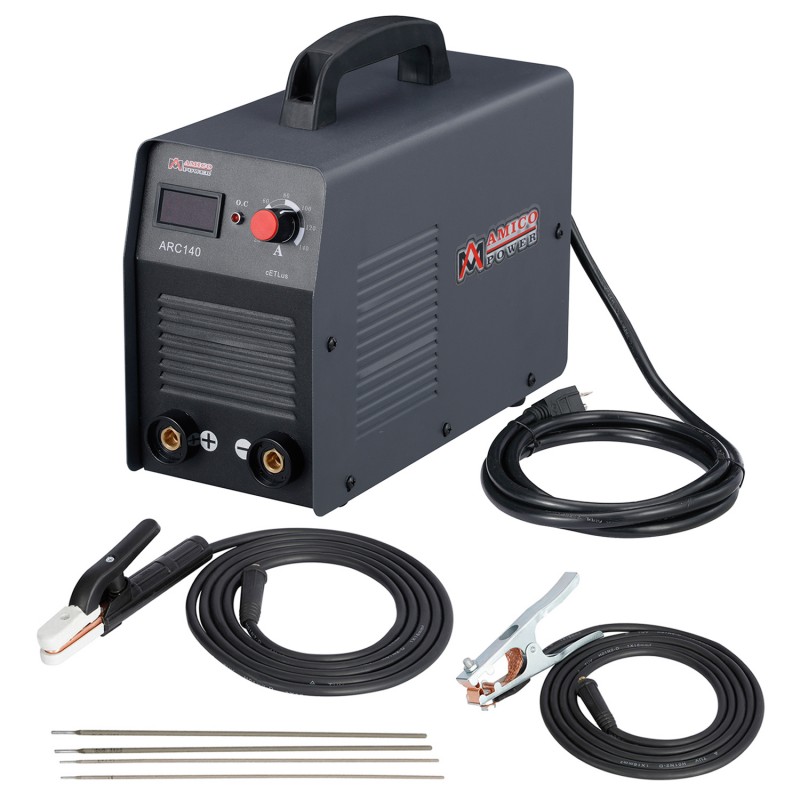Best Overall Stick Welders for 2020 – Our Picks
Best Stick Welding Machines - Our Picks
When it comes to portability and flexibility in the field, nothing beats a Stick Welding machine. Its ability to make quick and dirty welds with little or no preparation makes them great for emergencies or for use in areas with limited access to shielding gases.
As a skill, learning to stick weld is valuable to every welder and the experience gained can be applied to other welding processes as well. Here are five of the best overall Stick Welders on the market today that we recommend looking for your shop or garage.
Hobart Stickmate 160i
The Stickmate 160i by Hobart isn’t going to be the cheapest option out there, but when you buy Hobart, you can be rest assured you’re buying a quality product designed by a team that understands welders and their needs. The Stickmate 160i offers 120v and 240v power options, so you can run it off a standard outlet or go for the more powerful option if you have a 240v outlet. It also only weighs around 15 pounds, so it’s very easy to take with you on the road. It provides up to 160 amps of DC output when plugged into a 240v outlet. You can adjust this output in one-amp increments, giving you very precise control for those delicate projects.
Lincoln Electric K1170
The K1170 by Lincoln Electric is one of the bestselling stick welders available. It can weld carbon steel, cast iron, and both low-alloy and stainless steel. The arc is very smooth, and it can weld 16-gauge and heavier metals in addition to thinner metals. This gives it the versatility needed to do everything from small DIY projects to repairing farm equipment. While it’s a good stick welder for beginners, it’s also a good option for professionals and those who weld often. It can run for up to two minutes at max power, and it has an easy to use amp control that allows you to select anything from 40A to 225A.
Pros:
- Very versatile.
- It’s a good investment welder that you'll use for years and as your skills improve.
- Includes a three-year warranty on parts and labor.
Cons:
- 220v only, so it won’t work with standard outlets.
- Heavier than a number of other stick welders, so it’s not as portable
- Low duty cycle. Two minutes of welding out of every ten at the highest power setting.
Forney Easy Weld 100ST Arc Welder
The Forney Easy Weld 100ST stick welder can be plugged into any 120v outlet, so it can be used virtually anywhere with electricity. It uses an inverter power system that provides 90 amps of output. This is one of the lightest stick welders available, weighing in at less than eight pounds, so it’s extremely easy to take with you anywhere you go. It’s also TIG capable, so you can convert it to a TIG welder with the right accessories. It’s perfect for use with a number of different metals and can handle metal up to 5/16” inch thick.
Amico Power Arc 160D
The Amico Power Arc 160D is a well-priced stick welder that can provide you with all the power you need for your welding projects. It has both 115v and 230v input and can work with metals that are up to a 1/4″ thick. This welder has an output of up to 160 amps and runs on DC current. It has a duty cycle of six continuous minutes, so you can get a good amount done and then rest for only four minutes. The IGBT technology used in the Power Arc 160D works in combination with its inverter design to create a very energy-efficient piece of equipment.
Amico ARC-140 Stick ARC DC Inverter Welder
The ARC-140 stick ARC DC Inverter welder by Amico offers everything you need in a very affordable package. It features an easy to read LCD display and simple controls that you can learn within a few minutes of taking it out of the box. The ARC-140 produces stable, continuous welding arcs that reduce spatter. The welder can tackle metals up to a fourth of an inch thick, making it ideal for small jobs or DIY projects. Like the Arc 160D, the ARC-140 is rated for a 60% duty cycle. It produces between 20 and 140 amps of DC current.
Conclusion
Though overshadowed by modern MIG and TIG machines, the Arc Welder still has a lot of value and utility in the shop. For those looking to add a Stick machine but may not have a large budget to invest in equipment, any of these five stick welders will meet your needs without breaking the bank.

